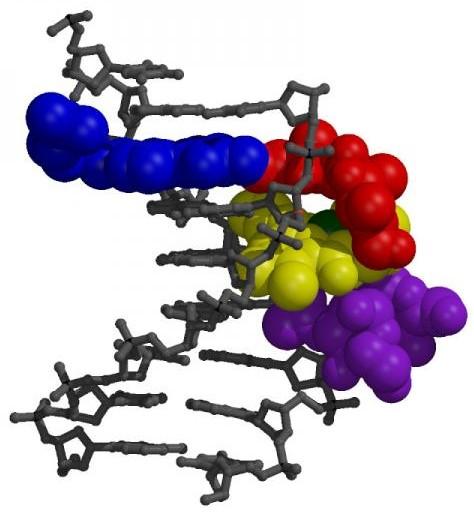The research may help scientists develop improved chemotherapy drugs to treat various types of cancer

Researchers from the School of Medicine and the School of Science at the University of Indianapolis were able to obtain the first three-dimensional image of the structure of a known chemotherapeutic agent and its link to DNA. The research may help scientists develop improved chemotherapy drugs to treat various types of cancer.
Using X-ray crystallography, the researchers were able to obtain for the first time the three-dimensional image, at the molecular level, of the substance bleomycin (bleomycin) associated with DNA.
Crystallography is a very common analytical method in which X-rays are irradiated on crystals and from the form of their reflection the entire crystal array can be deduced. "Although bleomycin has been studied for forty years and there is extensive information regarding its mechanism of action, without an accurate three-dimensional image of it, it is not possible to get a full understanding of how the drug is prepared and binds to DNA. If you want to improve the drug's properties and make it a better chemotherapeutic agent, you have to understand in more detail how it works," says lead researcher Milli Georgiadis, professor of biochemistry and molecular biology in the School of Medicine and Sciences. A combined chemotherapy treatment that includes bleomycin was successfully developed in the same research center by the oncologist Lawrence Einhorn (Einhorn), a distinguished professor of medicine.
Multi-drug therapy, which reduces the toxicity of bleomycin, is the currently recommended treatment against testicular cancer. Because it causes damage to the lungs, bleomycin is not routinely used to treat other types of cancer. "The three-dimensional description we received for the structure of bleomycin allows us to gain better insights into the exact mechanism of the drug's activity with DNA so that we can design a better drug, with less toxicity. Since this is a compound that binds to DNA, there is no limit to the types of cancer we can treat if we can actually reduce its toxicity," says Dr. Georgiadis, who is a structural biologist. The importance of the research is that many successful chemotherapy drugs are DNA-binding substances.
